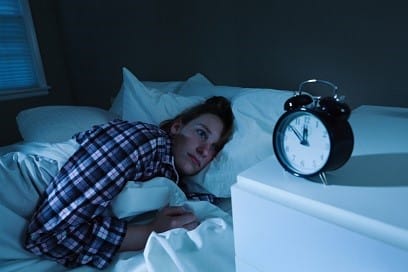Seasonal affective disorder (SAD) is a depressive illness that usually appears during the fall and wintertime when daytime light levels start to naturally decrease. It produces symptoms very similar to those associated with major depression and other depression-related conditions. According to the results of a new study published in 2013 in the Journal of Affective Disorders, people with seasonal affective disorder misinterpret their sleeping patterns in a way that strongly resembles the sleep-related misperceptions of people with the sleep-wake disorder called insomnia. This connection may mean that doctors can treat SAD with some of the techniques used to treat insomnia patients.
Seasonal Affective Disorder Basics
Seasonal affective disorder does not have separate standing as a mental health condition in the American Psychiatric Association’s Diagnostic and Statistical Manual of Mental Disorders. Instead, it exists as a subtype or variant of other diagnosable depressive illnesses. Symptoms associated with the disorder include classic depression-related complaints such as a lack of energy, loss of normal concentration abilities, changes in sleeping patterns, changes in eating patterns, decreased involvement in social interactions, a decline in personal motivation, unusual irritability and the presence of dysfunctional emotional states such as helplessness or hopelessness. Some individuals with the condition also develop suicidal thought patterns. Most affected people start experiencing their SAD-related symptoms each year during the transition from fall to winter. However, in a relatively small number of cases, this pattern reverses and symptoms start to appear as spring transitions into summer. Although the span of time in which symptoms appear varies from person to person, many individuals feel the effects of their depression for about five out of every 12 months. Teenage girls and women develop the disorder more frequently than teenage boys and men. One of the main treatments used to address the effects of seasonal affective disorder is light therapy, an approach that uses specially designed lamps to offset the drop in natural sunlight that occurs during the winter months. However, the National Institute of Mental Health reports, almost 50 percent of people with the disorder don’t improve after receiving this therapy. Other established options for treatment include psychotherapy and various antidepressants.
Similarities to Insomnia
Insomnia is a fairly common condition that involves difficulty falling asleep during designated sleeping times or difficulty staying asleep throughout a designated sleeping time. People affected by the disorder often have misconceptions about their sleeping patterns that reinforce insomnia’s negative effects, the authors of the study in the Journal of Affective Disorders explain. For instance, insomniacs often overestimate the amount of time they sleep each night because they count any time they spend in bed as “sleeping,” even if they remain awake for long stretches of time. During the study, a multi-university research team used interviews and questionnaires to examine the sleep-related behaviors of 147 adults from the Pittsburgh area. After reviewing the results of these interviews and questionnaires, the study’s authors concluded that people diagnosed with seasonal affective disorder share many of the sleep-related misperceptions that appear in people diagnosed with insomnia. They also concluded that, as is true with insomniacs, these misperceptions contribute significantly to the development of behavioral patterns that negatively reinforce SAD’s effects on mental health and well-being.
Shared Treatment Approaches
One of the most highly regarded treatments for insomnia is a type of psychotherapy called cognitive behavioral therapy for insomnia, or CBT-I. Like all forms of cognitive behavioral therapy, this technique centers around a recognition and retraining process that lets patients identify harmful mental/behavioral patterns in their lives, and then teaches them how to establish new replacement patterns that improve daily life function. In particular, CBT-I uses this framework to identify harmful sleeping patterns in insomniacs and establish healthier patterns that improve restful sleep and decrease insomnia-related symptoms. The authors of the study in the Journal of Affective Disorders believe that mental health professionals can potentially adapt the basic techniques of cognitive behavioral therapy for insomnia to the treatment of seasonal affective disorder. Their rationale for this belief is the high degree of similarity between the sleep-related misperceptions of insomniacs and the sleep-related misperceptions of people with SAD. Since CBT-I is specifically designed to address habitual thoughts and behaviors regarding sleep, it may produce similar results in both insomnia- and SAD-affected populations. Researchers will need to investigate this subject further to determine the true usefulness of CBT-I techniques in seasonal affective disorder treatment.

